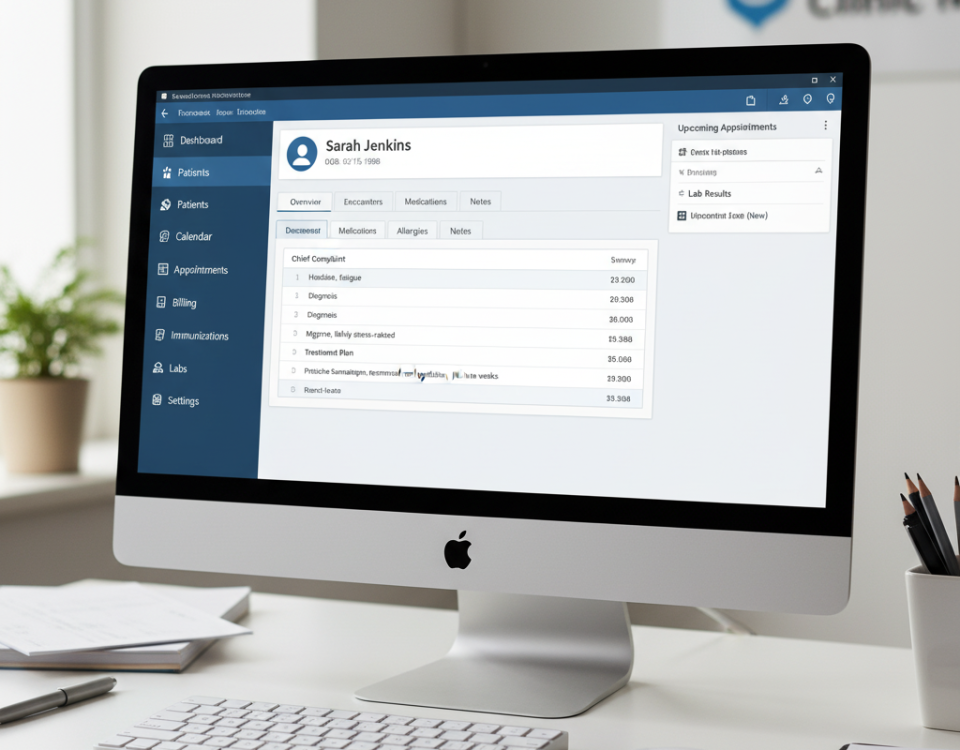- Home
- About Us
- EMR Features
-
-
- EMR Features
-
- Patient Health Features
-
- Clinic Features
-
-
- Specialties
-
- Blog
- Contact Us
6 Common Mistakes to Avoid When Choosing an EMR System

Choosing an EMR system is a critical decision for any healthcare practice. With so many EMR software options on the market, picking the wrong one can lead to inefficient workflows, frustrated staff, and even compliance issues. In Ontario, where digital healthcare adoption continues to grow, finding the right EMR solution can mean the difference between streamlined operations and daily bottlenecks. Avoiding common pitfalls during selection ensures the system supports clinical, administrative, and regulatory goals from day one.
1. Overlooking the Practice’s Specific Needs
Every clinic runs differently. A general-purpose EMR system might not suit the unique workflows of a family practice, a specialist, or a multi-location healthcare provider. Skipping a detailed needs assessment often results in software that adds unnecessary features while lacking critical ones. Choosing EMR software that aligns with specific clinical processes, patient load, and documentation habits saves time and reduces friction during implementation.
2. Ignoring User Experience and Interface Simplicity
Complex, cluttered interfaces slow down productivity and frustrate healthcare staff. When EMR software isn’t intuitive, clinicians spend more time figuring out the system than focusing on patient care. A smooth, user-friendly interface makes navigation faster and improves adoption rates. The learning curve matters—especially in busy practices where time is already stretched thin.
3. Underestimating Integration Capabilities
Many EMR practices in Ontario rely on other digital tools, like billing platforms, pharmacy systems, lab portals, or scheduling software. If the EMR solution doesn’t integrate seamlessly with these tools, double data entry becomes a daily chore. Poor integration leads to fragmented workflows and increases the risk of errors. Checking for API availability and integration support should never be an afterthought.
4. Not Considering Vendor Support and Training
Post-implementation support is often overlooked but critical. Even the best EMR system needs occasional troubleshooting, updates, and staff training. Without responsive vendor support and robust onboarding resources, teams can feel stranded. A reliable vendor offers ongoing assistance, timely updates, and clear communication, essential for minimizing disruptions in patient care.
5. Failing to Verify Data Security and Compliance
Patient data comes with a responsibility. EMR software that doesn’t meet Canadian privacy laws like PHIPA (Personal Health Information Protection Act) can lead to serious consequences. Encryption, access controls, and audit trails are non-negotiable features. In Ontario, EMR solutions must not only secure data but also comply with evolving regulatory requirements to ensure long-term viability.
6. Choosing Price Over Value
Going with the cheapest option can lead to higher costs down the line. Limited features, poor support, or frequent outages disrupt operations and may require costly workarounds. Instead of just comparing pricing tiers, evaluating the overall value, features, scalability, support, and reliability provides a clearer picture of what’s worth investing in.
Invest Wisely in the Right EMR System
Selecting an EMR system is not just an IT decision—it’s a business-critical move that shapes daily operations, compliance, and patient care quality. Avoiding these six common mistakes helps ensure the software truly supports long-term practice growth and efficiency. For those in need of a reliable, compliant, and user-friendly EMR solution in Ontario, Alembico EMR offers a platform tailored to local healthcare needs. Ready to upgrade clinical operations without the hassle? Contact Alembico today to see how the right EMR software can make all the difference.
Also read:
Choosing the Right EMR: A Guide for Healthcare Providers
Tags: EMR software, EMR Solution, EMR systems in Ontario


